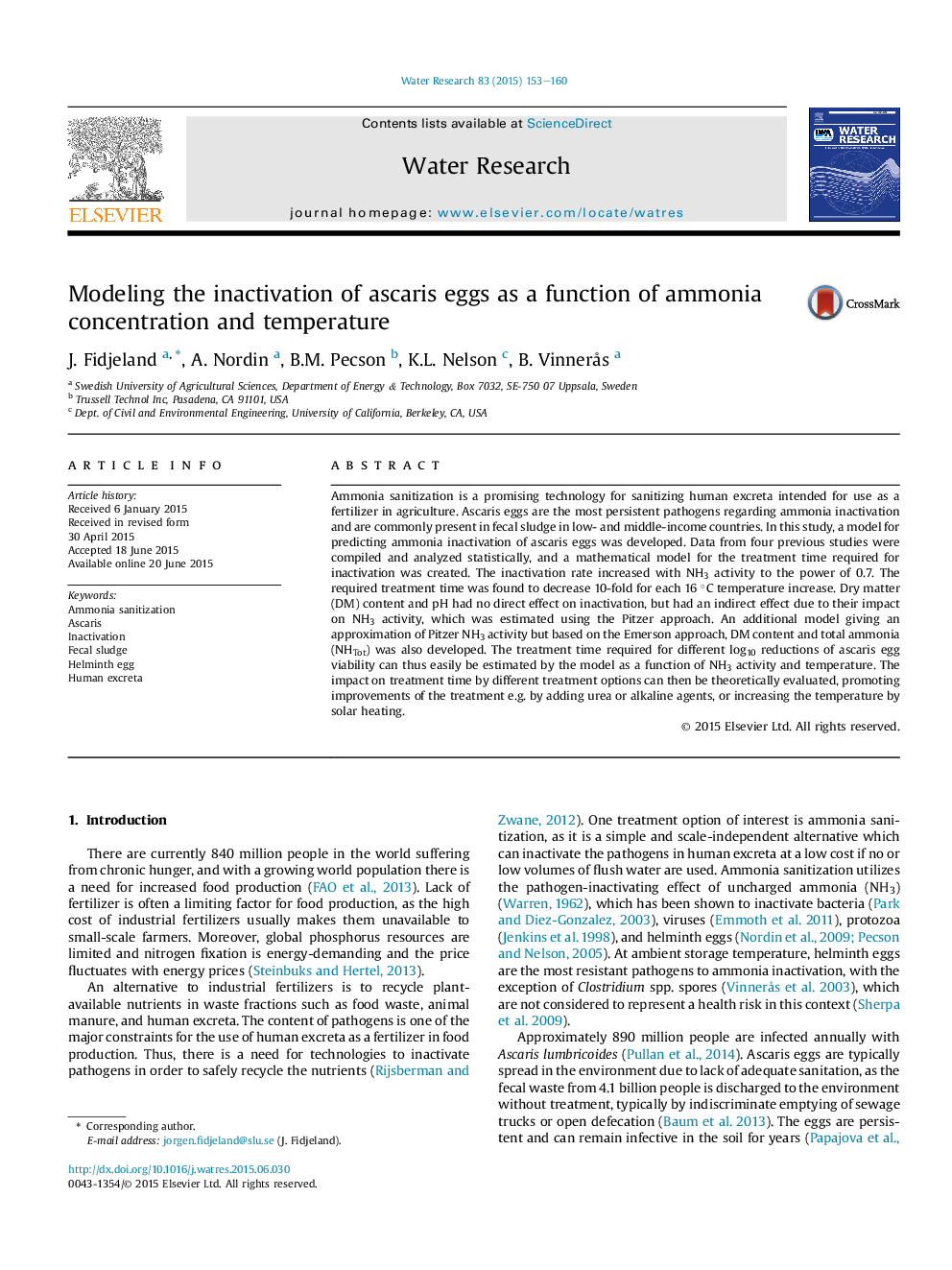| کد مقاله | کد نشریه | سال انتشار | مقاله انگلیسی | نسخه تمام متن |
|---|---|---|---|---|
| 6365750 | 1623085 | 2015 | 8 صفحه PDF | دانلود رایگان |
- The inactivation of ascaris eggs was modelled as a function of temperature and NH3.
- Carbonate, pH and dry matter content only had an indirect impact on the inactivation.
- The model could predict published ascaris inactivation data with a good fit.
Ammonia sanitization is a promising technology for sanitizing human excreta intended for use as a fertilizer in agriculture. Ascaris eggs are the most persistent pathogens regarding ammonia inactivation and are commonly present in fecal sludge in low- and middle-income countries. In this study, a model for predicting ammonia inactivation of ascaris eggs was developed. Data from four previous studies were compiled and analyzed statistically, and a mathematical model for the treatment time required for inactivation was created. The inactivation rate increased with NH3 activity to the power of 0.7. The required treatment time was found to decrease 10-fold for each 16 °C temperature increase. Dry matter (DM) content and pH had no direct effect on inactivation, but had an indirect effect due to their impact on NH3 activity, which was estimated using the Pitzer approach. An additional model giving an approximation of Pitzer NH3 activity but based on the Emerson approach, DM content and total ammonia (NHTot) was also developed. The treatment time required for different log10 reductions of ascaris egg viability can thus easily be estimated by the model as a function of NH3 activity and temperature. The impact on treatment time by different treatment options can then be theoretically evaluated, promoting improvements of the treatment e.g. by adding urea or alkaline agents, or increasing the temperature by solar heating.
Journal: Water Research - Volume 83, 15 October 2015, Pages 153-160
